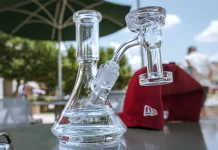Varicose veins in legs are a common condition affecting millions of people worldwide, particularly women. These enlarged, twisted veins appear just under the skin and can lead to discomfort, pain, and other complications if left untreated. In this article, we will explore the causes, symptoms, and various treatment options for varicose veins in the legs.
What Are Varicose Veins?
Varicose veins in legs are veins that have become swollen and enlarged due to improper blood flow. Normally, veins carry blood from the limbs back to the heart, but when the valves in these veins become weak or damaged, blood can pool in the veins. This causes the veins to stretch and become varicose, leading to their twisted and bulging appearance.
Causes of Varicose Veins in Legs
Several factors contribute to the development of varicose veins in the legs. These include:
- Age: As we age, the valves in our veins may weaken, increasing the risk of varicose veins.
- Genetics: If your family members have varicose veins, you’re more likely to develop them as well.
- Gender: Women are more prone to varicose veins due to hormonal changes during pregnancy, menstruation, and menopause.
- Prolonged Standing or Sitting: Occupations that require long periods of standing or sitting can impede blood flow and increase the risk of varicose veins.
- Obesity: Excess weight puts extra pressure on the veins, which can cause them to become varicose.
- Pregnancy: The growing fetus increases pressure on the veins in the legs, and hormonal changes may also weaken the vein walls.
Common Symptoms of Varicose Veins in Legs
Varicose veins in the legs often present with noticeable symptoms. These include:
- Visible, Bulging Veins: The most obvious sign is the appearance of enlarged veins, usually blue or dark purple, running along the legs.
- Aching or Heavy Feeling in the Legs: Individuals may feel discomfort or heaviness in the legs, especially after prolonged periods of standing.
- Swelling: Swelling in the ankles and calves is common, particularly toward the end of the day.
- Itching or Skin Irritation: Some may experience dry or itchy skin around the varicose veins.
- Muscle Cramps: Leg cramps, especially at night, can be another symptom of varicose veins.
- Changes in Skin Color: In more severe cases, the skin around varicose veins may darken or become discolored.
Complications of Untreated Varicose Veins
While varicose veins in legs are often seen as a cosmetic issue, they can lead to more serious health problems if left untreated. Some of the complications include:
- Ulcers: Skin ulcers can form near varicose veins, usually around the ankles, which can be painful and difficult to heal.
- Blood Clots: Varicose veins increase the risk of developing blood clots, which can lead to deep vein thrombosis (DVT), a potentially life-threatening condition.
- Bleeding: Occasionally, veins close to the skin may burst, causing minor bleeding.
Treatment Options for Varicose Veins in Legs
Fortunately, there are a variety of treatment options available to manage varicose veins in the legs, ranging from lifestyle changes to medical interventions.
1. Lifestyle Changes
- Exercise: Regular physical activity, such as walking or cycling, can improve blood flow and strengthen vein walls.
- Elevating the Legs: Elevating your legs when resting helps reduce the pressure on the veins.
- Compression Stockings: Wearing compression stockings can help prevent the veins from worsening and relieve discomfort by improving blood circulation.
2. Medical Procedures
- Sclerotherapy: A non-surgical procedure where a solution is injected into the varicose vein, causing it to close and eventually fade.
- Laser Therapy: Laser treatment uses light energy to close off smaller varicose veins and spider veins.
- Radiofrequency Ablation (RFA): This procedure involves heating the varicose vein using radiofrequency energy, causing the vein to collapse and seal shut.
- Endovenous Laser Treatment (EVLT): Similar to RFA, EVLT uses laser energy to close off the vein.
- Surgery: For more severe cases, surgical procedures like vein stripping or ligation may be necessary to remove or tie off the affected veins.
Prevention of Varicose Veins in Legs
Although not all cases of varicose veins can be prevented, certain lifestyle adjustments can reduce the risk:
- Maintain a Healthy Weight: Keeping your weight in check reduces pressure on your legs and veins.
- Stay Active: Regular exercise promotes better circulation, which helps prevent the formation of varicose veins.
- Avoid Prolonged Sitting or Standing: Take frequent breaks to move around if your job involves long periods of sitting or standing.
- Wear Comfortable Clothing: Avoid tight clothes around your waist or legs that could restrict blood flow.
Conclusion
Varicose veins in legs are a common condition that can cause discomfort and lead to complications if untreated. While lifestyle changes may help manage or prevent the condition, medical procedures offer effective solutions for more severe cases. If you’re experiencing symptoms of varicose veins, consult a healthcare professional to determine the best course of action.




